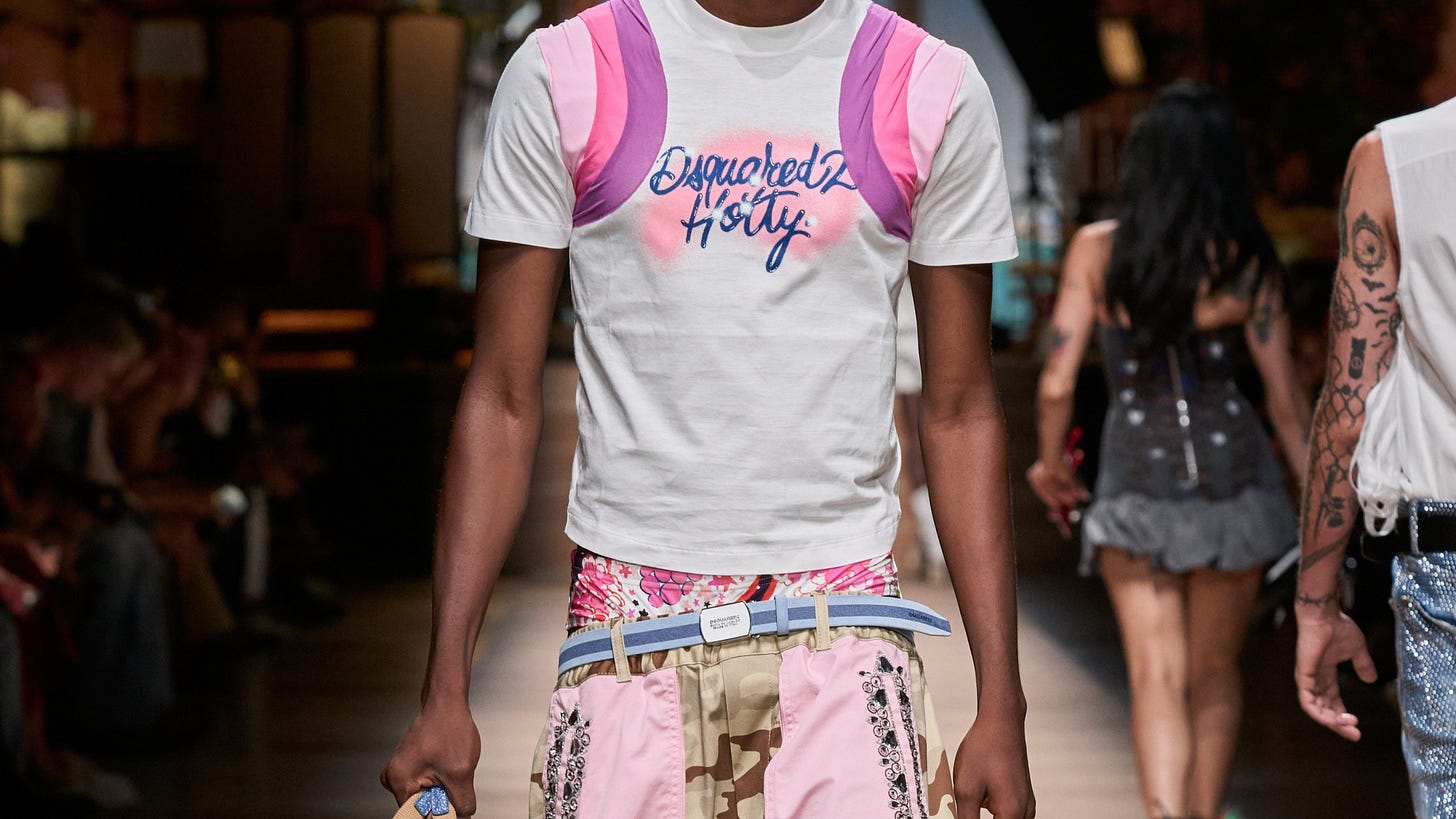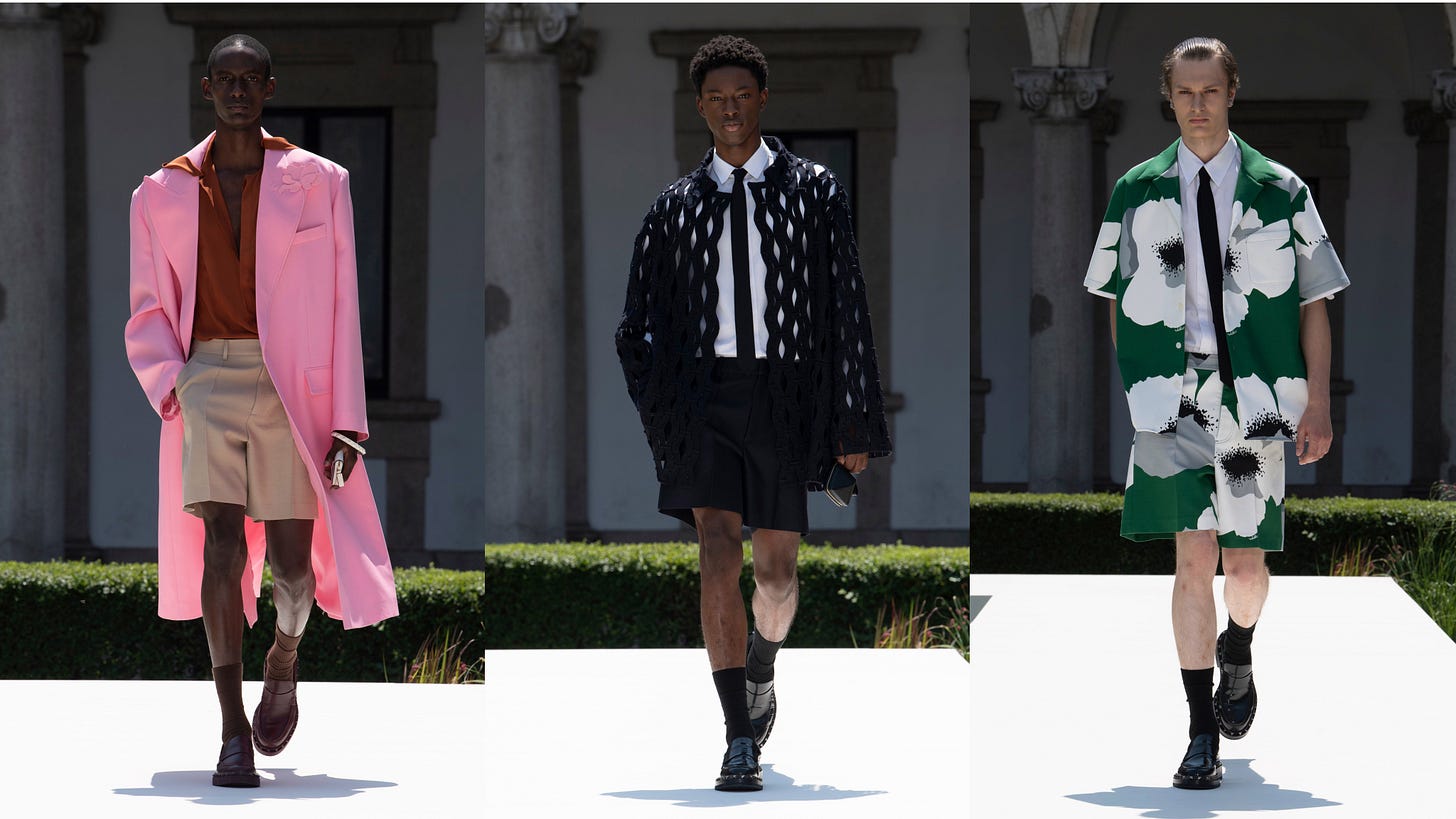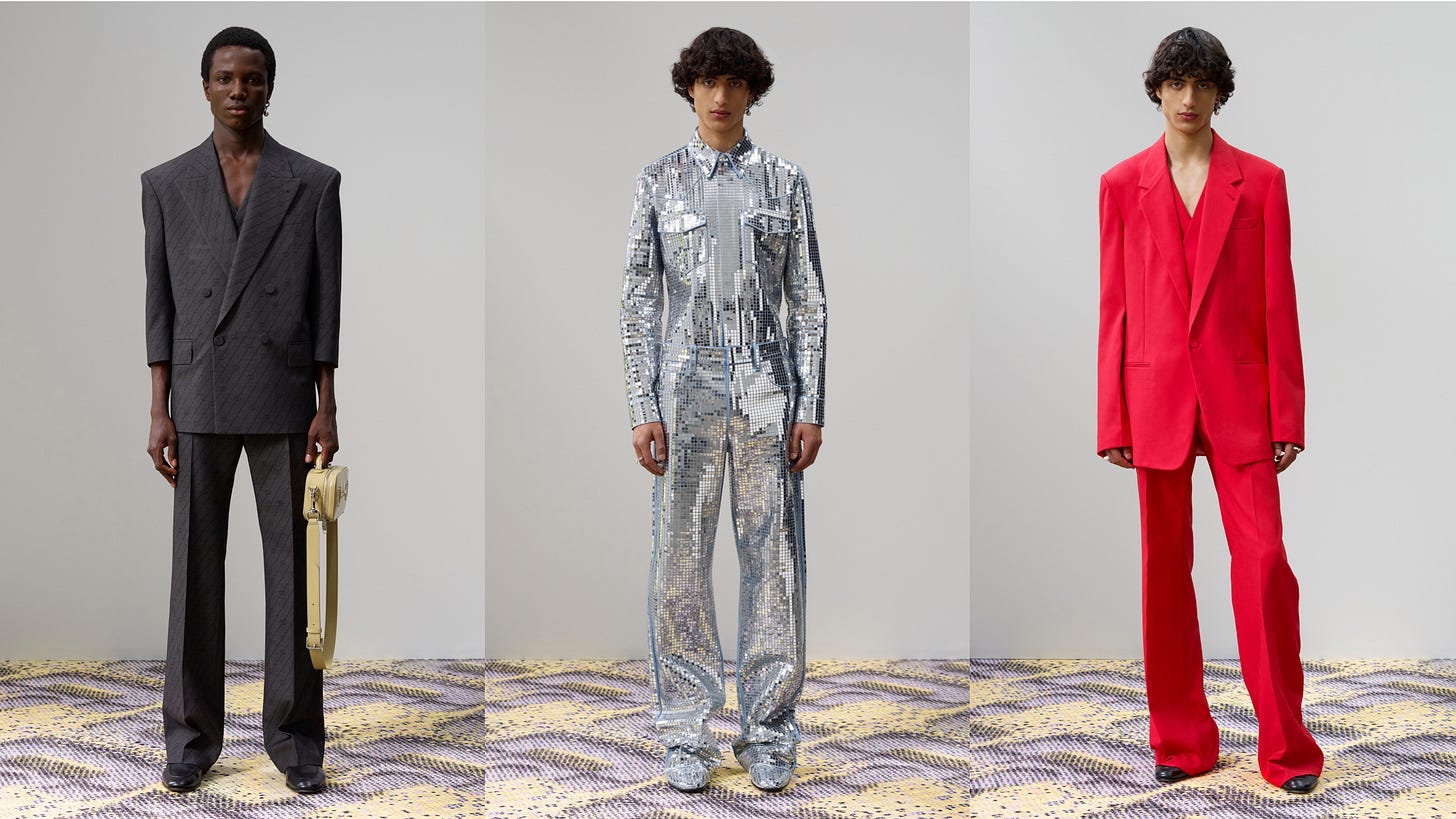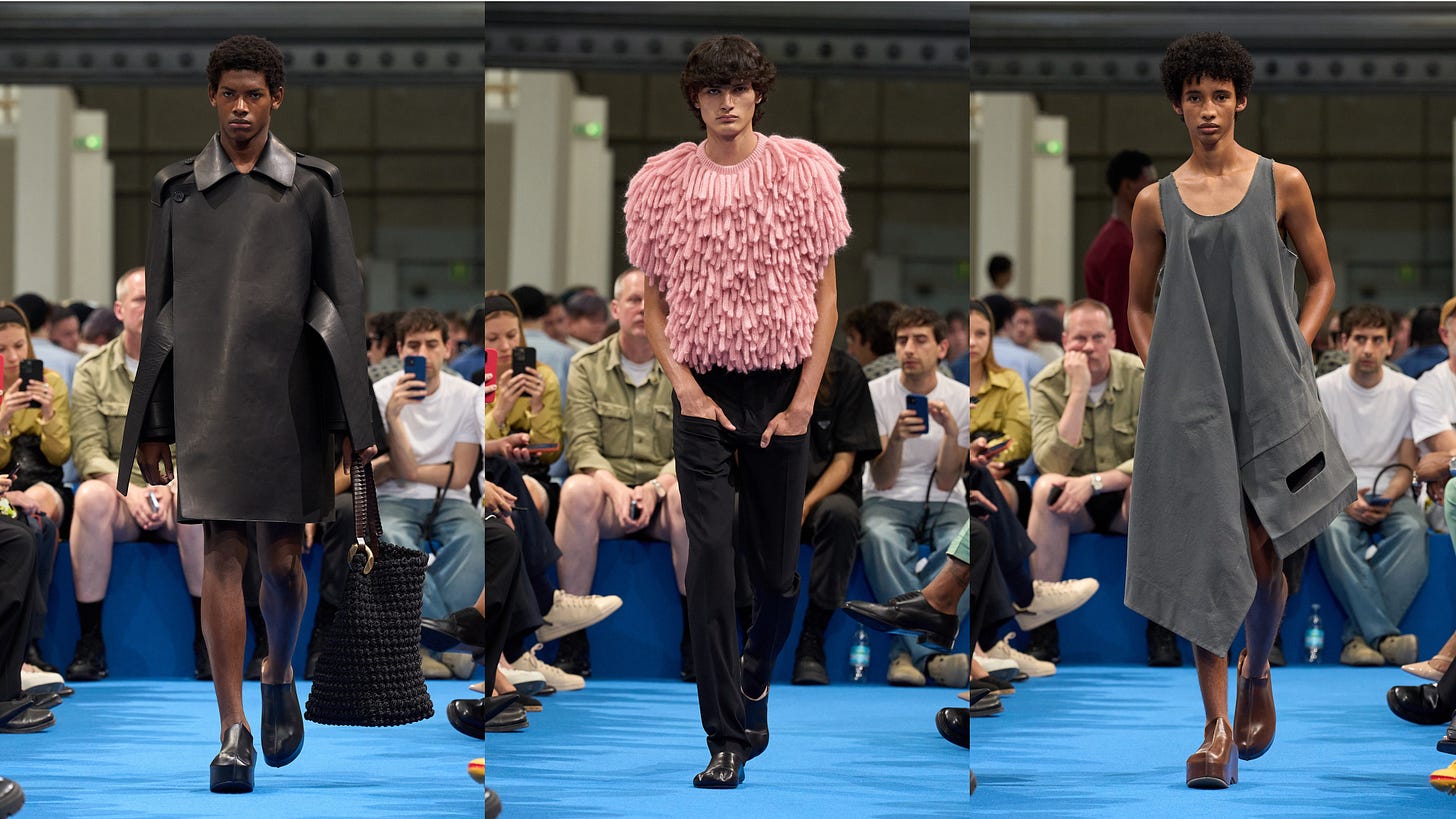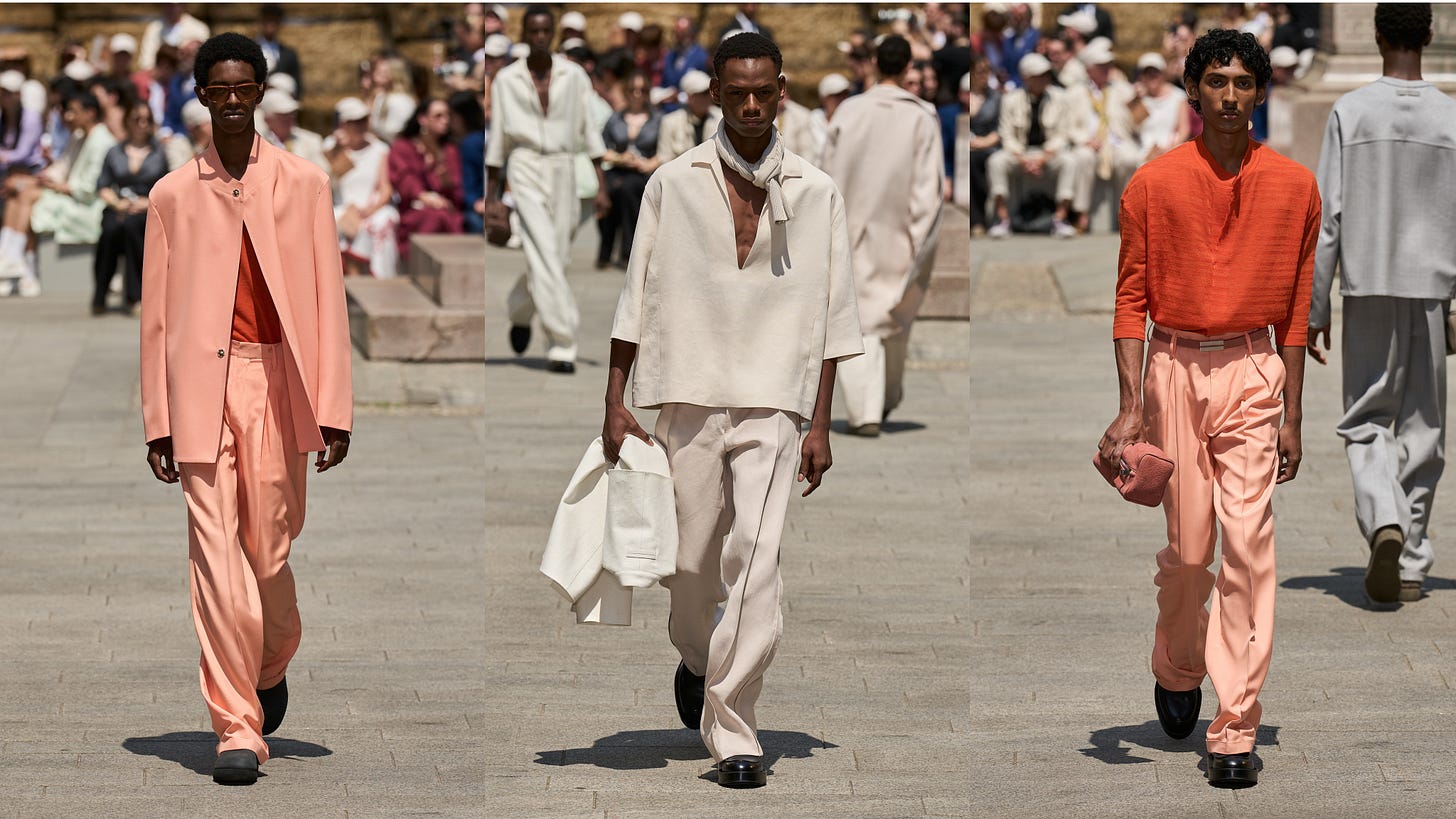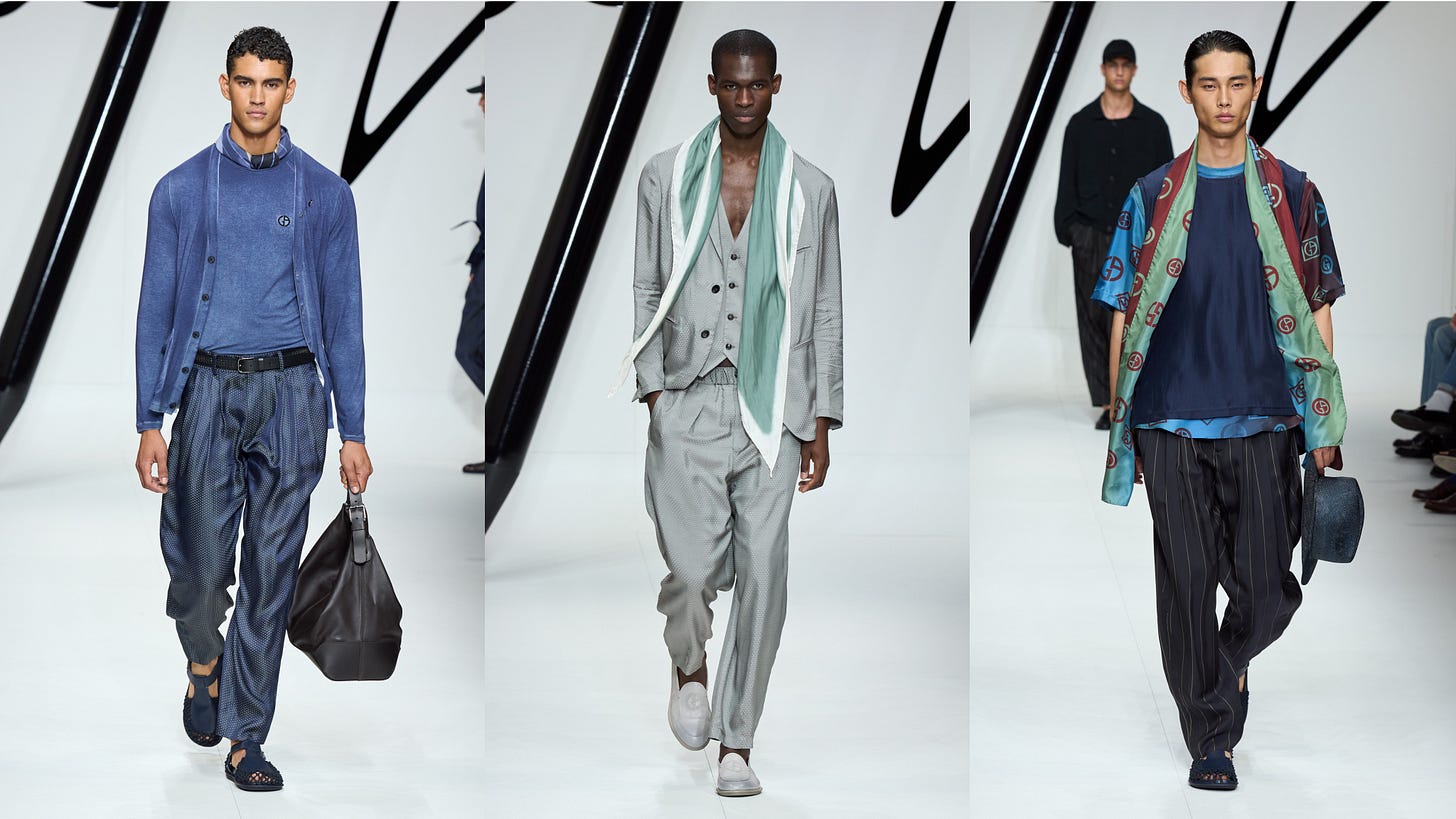Redefining Masculinity: Milan Spring/Summer 2024 Fashion Breaks Gender Norms
Milan Spring/Summer 2024 Revolutionises Men's Style
Milan Spring/Summer 2024 fashion season showcased a powerful and transformative exploration of masculinity. Designers took a bold stance, deconstructing traditional notions of male attire and challenging societal expectations. The runways in Milan became a captivating platform for self-expression and innovation, as designers fearlessly pushed the boundaries of gender norms. From Saint Laurent's liberating collection to Valentino's reimagined macho stereotypes and Gucci's embrace of femininity, the fashion capital witnessed a revolution in men's fashion. Join us as we delve into the inspiring journey of Milan Spring/Summer 2024, where the concept of masculinity is reshaped, and a new era of inclusivity and diversity emerges.
The conversation began with Saint Laurent. Rather than showing in Paris, the brand chose to vault the menswear season (as you can when your 2022 turnover totals €3.3bn) and stage its catwalk show alone in Berlin. It was a collection remarkably free of traditional gender constraints, so, say, a male model may wear a traditionally feminine halter-necked blouse with polka-dots and a chiffon lavaliere scarf in the back. "Femininity and masculinity—I don’t know the limit between them," designer Anthony Vaccarello said, and it showed. It has also become something of a rallying cry for other designers, especially during the often machismo-drenched Milan Fashion Week.
There are pure souls in Milan, such as Valentino's Pierpaolo Piccioli. He expressed an interest in challenging macho stereotypes by symbolically replacing restrictive neckties with floral corsages, chopping up trousers into shorts or skirts, and easing tailoring around the body in succulent, seemingly feminine colors like cassata green, cardinal red, blush pink, and cobalt.
He also printed clothes with quotes from the author Hanya Yanagihara’s novel ‘A Little Life’, with its story of intersecting and ever-transforming male relationships: one read, "We are so old, we have become young again." That neatly sums up designers’ current fetishization of the suit across the board, a traditional garment that, Piccioli argues, feels newly fresh and relevant for a generation that didn’t grow up with it stuffed into them as a corporate uniform. Plenty of designers, in fact, used the suit—a sartorial avatar of conventional masculinity, if ever there was one—to propose something new for the new man.
Gucci, which was quietly presenting a collection designed by the studio team ahead of the September debut of new creative director Sabato De Sarno, showed suits with bracelet-length cropped sleeves, with the models clutching handbags that, a decade or so ago, would’ve been considered too femme. There were plenty of suits at Dolce & Gabbana, too, alongside more three-dimensional florals and more lady-like polkadots and blouses—more gender norms upended. Most interesting were clinging tops with plissé drapery that were less reminiscent of the pumped-up bodies of Greco-Roman statues than the soigneé dresses of Parisian couturier Alix Grès and intersected perfectly with the body consciousness of twenty-somethings.
Jonathan Anderson chopped out V-shaped peepholes on fleshy chests and based many of his clothes on "the mundane object—wrongly molded shoes designed to recall the claw feet of Georgian furniture, wide stripes based on Cornishware, like decor captured in the back of provocative, NSFW shots. "Menswear, womenswear, whatever," the designer said of his gender-mixed clothes that felt like a precise reflection of how some young people see themselves and the world—banality mixed with a hypersexuality, skin always on show.
Alessandro Sartori at Zegna achieved the same end with the opposite approach: he used tailoring techniques and fabrics on untailored garments. He said "new suits" are something he has been obsessed with for about three years now and asserts that Zegna got there just as tastes shifted away from traditional forms of tailoring to an approach of coordinated garments. Sartori calls it "modular" and says it may consist of a color-matched polo shirt and shorts as easily as a jacket and trousers. Sartori has a fixation with fabrication; this season, his big story is linen. 192 bales of the stuff were stacked around the audience at his show, held open-air in a piazza in the shadow of La Scala. "The cashmere of summer," Sartori says. Zegna’s colors are great too: mint, powdery slate blue, shades of brown, blood orange, and a peach the brand calls flamingo.
Deconstructed suits, free bodies, linen—this conversation is tailor-made for Giorgio Armani, the man who first challenged and ultimately changed the suit back in the 1970s. He doesn’t lead Milan fashion, but Armani is undoubtedly its éminence grise, and there was plenty of soft gray in his Spring/Summer 2024 collection, shown a month or so before his 89th birthday. Armani’s codes were present and correct, and if his vision of masculinity seems rooted in a Herb Ritts shoot from around 1992, it still has relevance with a cadre of men around the world who don’t want revolution but rather an evolution in their clothing. And that was there, in a closing quartet of dark suits that were a masterclass in how tailoring can transform the body and our perceptions of it—how clothes can make the man.





